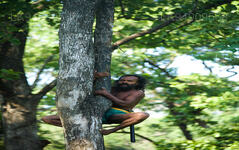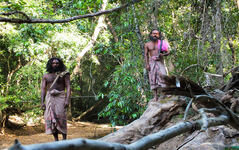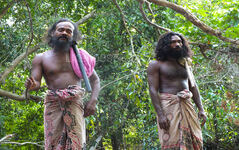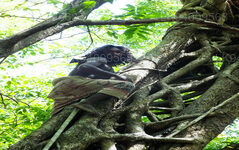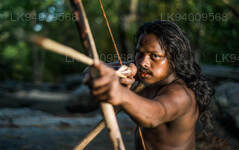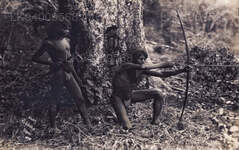
Badulla City
Badulla: Scenic town in Sri Lanka's hill country, surrounded by lush tea plantations and offering picturesque landscapes, waterfalls, and cultural sites.
Indigenous People
The Wanniyala-Aetto, or “forest people”, more commonly known as Veddas or Veddahs, are an Indigenous people of Sri Lanka, an island nation in the Indian Ocean; they were never numerous and are now few in number.
Roots of the Indigenous People
According to Early Man and the Rise of Civilisation in Sri Lanka: the Archaeological Evidence by S. U. Deraniyagala, by about 125,000 BP it is certain that there were prehistoric settlements in Sri Lanka . From as early as 18,000 BC a genetic continuum is shown with present-day Veddas.
According to the genesis myth of the Sinhala “race”/people, recorded in the ancient chronicle of the Sinhalese royalty, the Mahavansa, the Pulindas also called Veddas are descended from Prince Vijaya (6th-5th century BC), the founding father of the Sinhalese nation, through Kuveni, a woman of the Yakkha clan whom he had espoused. The Mahavansa relates that following the repudiation of Kuveni by Vijaya, in favour of a “Kshatriya” princess from the “Pandya” country, their two children, a boy and a girl, departed to the region of “Sumanakuta” (Adam’s Peak in the Ratnapura District), where they multiplied, giving rise to the Veddhas. Anthropologists such as the Seligmanns (The Veddhas 1911) believe the Veddhas to be identical with the “Yakkhas” of yore.
Veddas are also mentioned in Robert Knox’s history of his captivity by the King of Kandy in the 17th century. Knox described them as “wild men,” but also said there was a “tamer sort,” and that the latter sometimes served in the king’s army.
Indigenous people in Sri Lanka
The Ratnapura District, which is part of the Sabaragamuwa Province is known to have been inhabited by the Veddhas in the distant past. This has been shown by scholars like Nandadeva Wijesekera (Veddhas in transition 1964). Indeed, the very name Sabaragamuwa is believed to have meant the village of the Sabaras or “forest barbarians”. Such place-names as Veddha-gala (Veddha Rock), Veddha-ela (Veddha Canal) and Vedi-kanda (Veddha Mountain) in the Ratnapura District also bear testimony to this. As Wijesekera observes, a strong Veddha element is discernible in the population of Veddha-gala and its environs. As for the traditional Veddha lifestyle, a number of authorities have delved on this and we can easily describe their life-style as it existed in the past, and as it exists today.
Language of the Indigenous People
The original language of the Veddas is the Vedda language. Today it is used primarily by the interior Veddas. Communities, such as Coast Veddas and Anuradhapura Veddas, that do not identify themselves strictly as Veddas also use Vedda language in part for communication during hunting and or for religious chants. When a systematic field study was conducted in 1959 it was determined that the language was confined to the older generation of Veddas from Dambana. In 1990s self-identifying Veddas knew few words and phrases in the Vedda language, but there were individuals who knew the language comprehensively. Initially there was considerable debate amongst linguists as to whether Vedda is a dialect of Sinhalese or an independent language. Later studies indicate that it diverged from its parent stock in the 10th century and became a Creole and a stable independent language by the 13 century, under the influence of Sinhalese.
The parent Vedda language(s) is of unknown genetic origins, while Sinhalese is of the Indo-Aryan branch of Indo-European languages. Phonologically it is distinguished from Sinhalese by the higher frequency of palatal sounds C and J. The effect is also heightened by the addition of inanimate suffixes. Morphologically Vedda language word class is divided into nouns, verbs and invariables with unique gender distinctions in animate nouns. Per its Creole tradition, it has reduced and simplified many forms of Sinhalese such as second person pronouns and denotations of negative meanings.
Indigenous people Hunters – Sri Lanka
Instead borrowing new words from Sinhalese Vedda created combinations of words from a limited lexical stock. Vedda also maintains many archaic Sinhalese terms prior to the 10th to 12th centuries, as a relict of its close contact with Sinhalese. Vedda also retains a number of unique words that cannot be derived from Sinhalese. Conversely, Sinhalese has also borrowed from the original Vedda language, words and grammatical structures, differentiating it from its related Indo-Aryan languages. Vedda has exerted a substratum influence in the formation of Sinhalese.
Sinhala-speaking Veddas are found primarily in the southeastern part of the country, especially in the vicinity of Bintenne in Uva District. There are also Sinhala-speaking Veddas who live in Anuradhapura District in the North Central Province.
Another group, often termed East Coast Veddas, is found in coastal areas of the Eastern Province, between Batticaloa and Trincomalee. These Veddas have adopted Tamil Tamil. The Sinhala speaking East Coast Veddas, are called Panama Veddas. They live just south of Batticoloa.
Cultural aspects of the Indigenous People
Religion of the Indigenous People
Animism is the original religion of Veddas. The Sinhalized interior Veddahs follow a mix of animism and nominal Buddhism whereas the Tamilized east coast Veddahs follow a mix of animism and nominal Hinduism, known as folk Hinduism amongst anthropologists. One of the most distinctive features of Vedda religion is the worship of dead ancestors: these are termed “nae yaku” among the Sinhala-speaking Veddas. There are also peculiar deities that are unique to Veddas. One of them is “Kande Yakka”.
Veddas along with the Island’s Buddhist, Hindu and Muslim communities venerate the temple complex situated at Kataragama, showing the syncretism that has evolved over 2,000 years of coexistence and assimilation. Kataragama is supposed to be the site at which the Hindu god Skanda or Murugan in Tamil met and married a local tribal girl, Valli, who in Sri Lanka is believed to have been a Vedda. There are a number of other shrines across the island, not as famous as Kataragama that are as sacred to the Veddas as well as to other communities.
Veddha religion centred round a cult of ancestral spirits known as Ne yakku, whom the Veddhas invoked for game and yams.
The Veddha marriage ceremony is a very simple affair. The ritual consists of the bride tying a bark rope (diya lanuva) of her own twisting, around the waist of the bridegroom. This is the essence of the Veddha marriage and is symbolic of the bride’s acceptance of the man as her mate and life partner. Although marriage between cross-cousins was the norm until recently, this has changed significantly, with Veddha women even contracting marriages with their Sinhalese and Moor neighbours.
In Veddha society, woman is in many respects man’s equal. She is entitled to similar inheritance. Monogamy is the general rule, though a widow would be frequently married by her husband’s brother as a means of support and consolation (widow inheritance). Death too is a simple affair without any ostentatious funeral ceremonies and the corpse of the deceased is promptly buried. Although that medical knowledge of the Veddha is limited, it nevertheless appears to be sufficient. For example, pythonesa oil (pimburu tel), a local remedy used for healing wounds, has proven to be very successful in the treatment of fractures and deep cuts.
Burial of the Indigenous People
Since the opening of colonisation schemes Veddha burials changed when they dug graves of about 4–5 feet in depth and left the body wrapped in some cloth and covered with leaves and earth. The Veddas also scooped the trunks of the Gadumba tree and laid the body between the scooped out wood planks and then buried. At the head of the grave were kept three open coconuts and a small bundle of wood, while at its foot were kept an opened coconut and an untouched coconut. Certain plants of the cactus species (pathok) were planted at the head of the grave, the middle and the foot their personal possessions like the bow and arrow, betel pouch, were also buried. This practice varied according to the different communities of the aboriginal settlements. The contents of the betel pouch of the deceased were eaten after his death.
In Vedda burial rituals the dead body was scented or smeared with some juice obtained from the leaves of jungle trees or a lime tree. The foot or the head of the grave was never lit either with fire or wax and water was not kept in a vessel by the grave side.
Jungle Dwelling Indigenous people – Sri Lanka
Cult of the DeadThe Veddas believe in the cult of the dead. They worshipped and made incantations to their Nae Yakka (Relative Spirit) followed by other customary ritual (called the Kiri Koraha) which is still in vogue among the surviving Gam Veddas of Rathugala, Pollebedda Dambana and the Henanigala Vedda re-settlement (in Mahaweli systems off Mahiyangane).
They believed that the spirit of their dead would haunt them bringing forth diseases and calamity. To appease the dead spirit they invoke the blessings of the Nae Yakka and other spirits, like Bilinda Yakka, Kande Yakka followed by the dance ritual of the Kiri Koraha.
According to Sarasin Cousins (in 1886) and Seligmann’s book – ‘The Veddas’ (1910).
“When man or woman dies from sickness, the body is left in the cave or rock shelter where the death took place, the body is not washed or dressed or ornamented in any way, but is generally allowed to be in the natural supine position and is covered with leaves and branches. This was formerly the universal custom and still persists among the less sophisticated Veddas who sometimes in addition place a large stone upon the chest for which no reason could be given, this is observed at Sitala Wanniya (off Polle-bedda close to Maha Oya), where the body is still covered with branches and left where the death occurred.”
Clothing of the Indigenous People
Until fairly recent times, the raiment of the Veddhas was remarkably scanty. In the case of men, it consisted only of a loincloth suspended with a string at the waist, while in the case of women, it was a piece of cloth that extended from the navel to the knees. Today, however, Veddha attire is more covering, men wear a short sarong extending from the waist to the knees, while the womenfolk clad themselves in a garment similar to the Sinhalese diya-redda which extends from the breastline to the knees.
Special places in Badulla
-
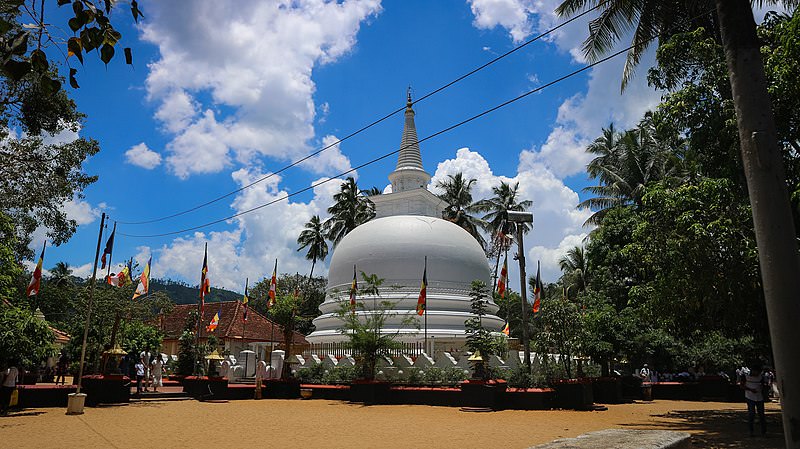 Muthiyangana Raja Maha Vihara
Muthiyangana Raja Maha ViharaMuthiyanganaya Raja Maha Viharaya lies in the centre of the city of Badulla. The History of this temple goes back to the time of Buddha but this area around Badulla goes way back in to the time of 19th -18th century BCE.
-
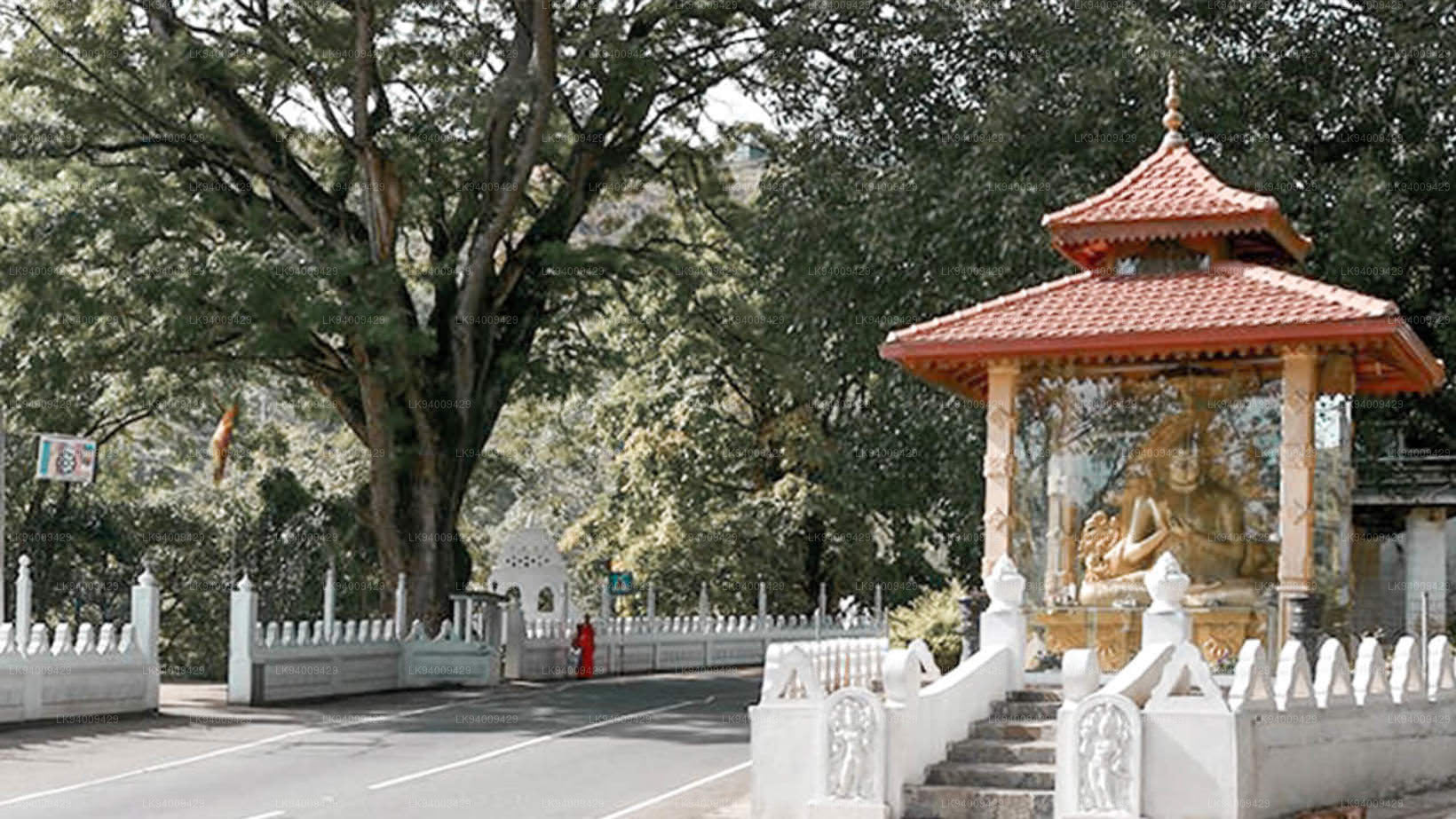 Dowa Raja Maha Viharaya
Dowa Raja Maha ViharayaDowa Raja Maha Viharaya (Dowa Cape Temple) lies few kilometres away from the Bandarawela town on the Bandarawela – Badulla Road. This temple is thought to be done by King Walagamba in the in first century BC.
-
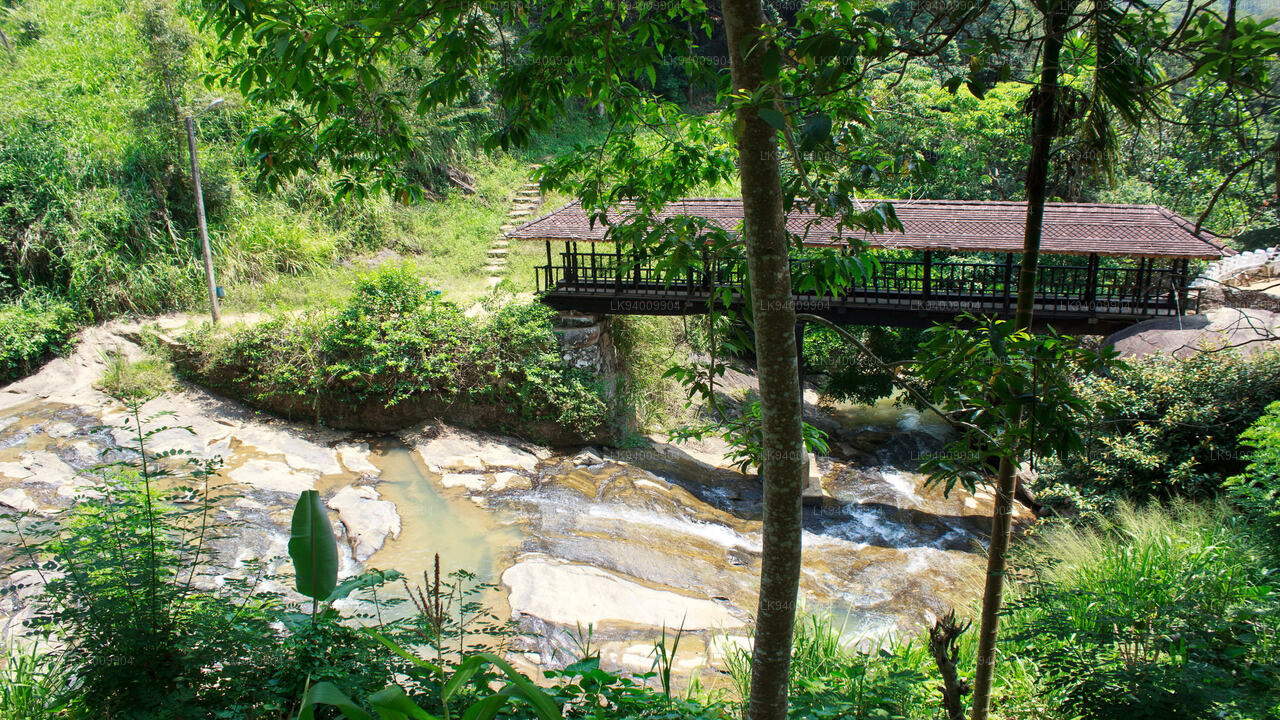 Bogoda Wooden Bridge
Bogoda Wooden BridgeThe Bogoda Wooden Bridge was built in the 16th century during the Dambadeniya era. This is said to be the oldest surviving wooden bridge in Sri Lanka. The bridge is situated at 7 kilometres (4.3 mi) west of Badulla.
-
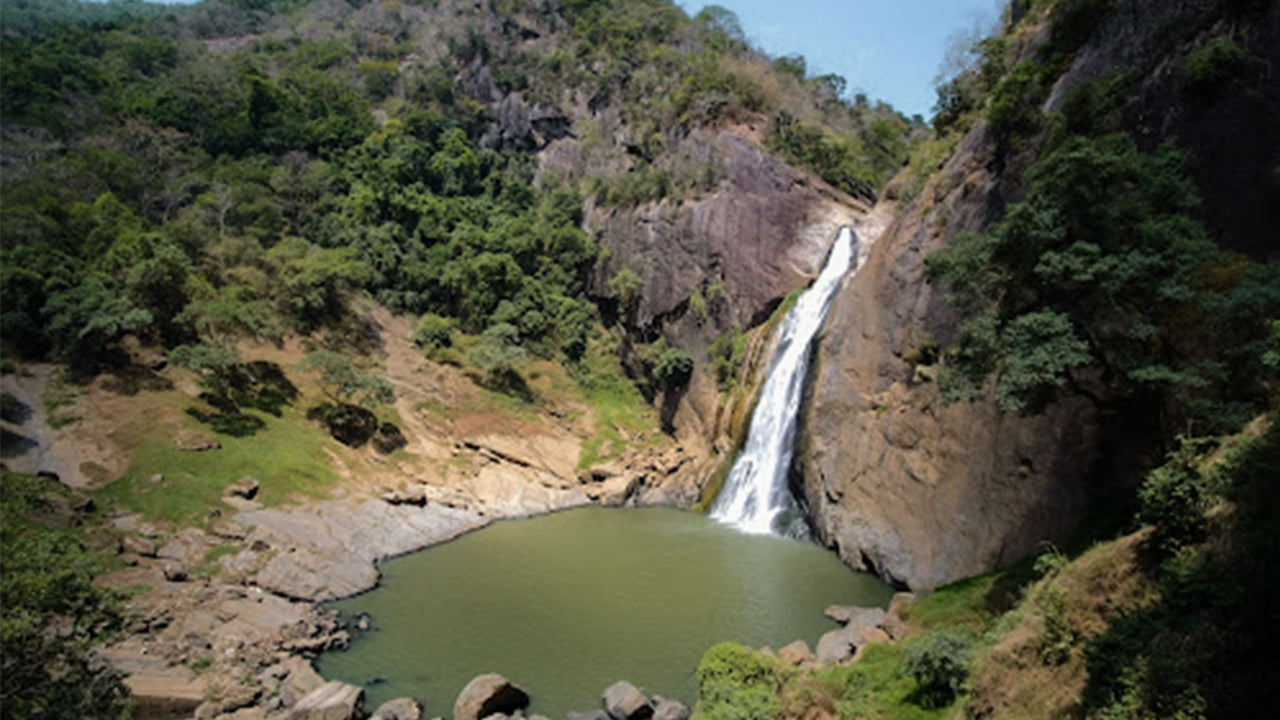 Dunhinda Falls
Dunhinda FallsDunhinda Falls is situated about 5 km away from Badulla town. It is 63 meters high and is considered to be one of the most beautiful waterfalls in Sri Lanka. The falls gets its name dew to the smoky dew drops spray.
About Badulla District
Badulla is the capital of Uva Province in Sri Lanka. Badulla is located on the southeast of Kandy, almost encircled by the Badulu Oya , about 680 meters (2200 ft) above sea level and is surrounded by tea plantations. The town is overshadowed by the Namunukula range of mountains. Badulla is about 230km away from Colombo towards the eastern slopes of central hills of Sri Lanka.
Badulla and surroundings are highly recommended for eco-tourists as Horton Plains National Park and the Knuckles mountains are few hours away.
About Uva Province
The Uva Province is Sri Lanka's second least populated province, with 1,187,335 people, created in 1896. It consists of two districts called Badulla and Moneragala The provincial capital is Badulla. Uva is bordered by Eastern, Southern and Central provinces. Its major tourist attractions are Dunhinda Falls, Diyaluma Falls, Rawana Falls, the Yala National Park (lying partly in the Southern and Eastern Provinces) and Gal Oya National Park (lying partly in the Eastern Province). The Gal Oya hills and the Central Mountains are the main uplands, while the Mahaweli and Menik rivers and the huge Senanayake Samudraya and Maduru Oya Reservoirs are the major waterways in Uva province.
【Text by Lakpura™. Images by Google, copyright(s) reserved by original authors.】

